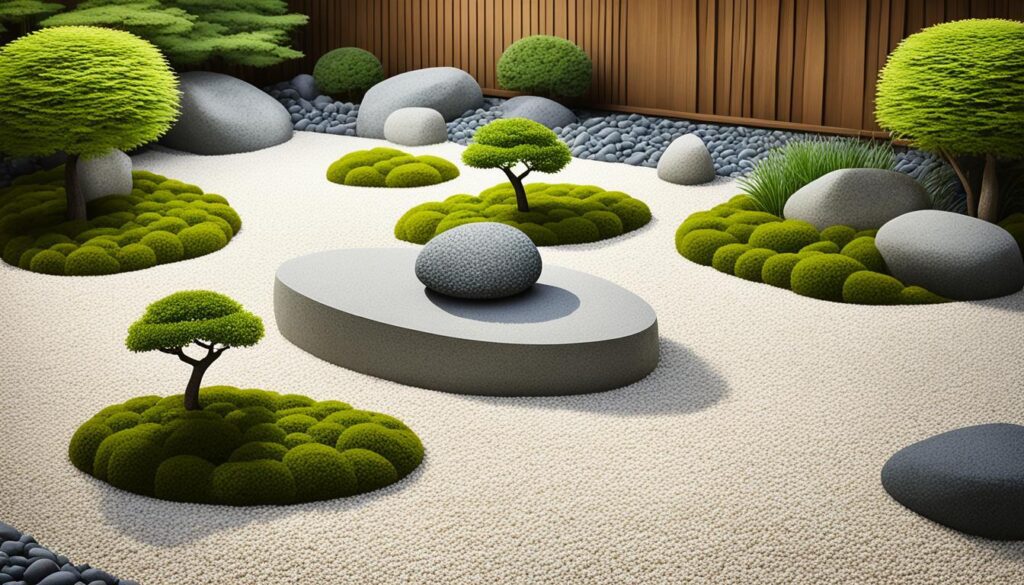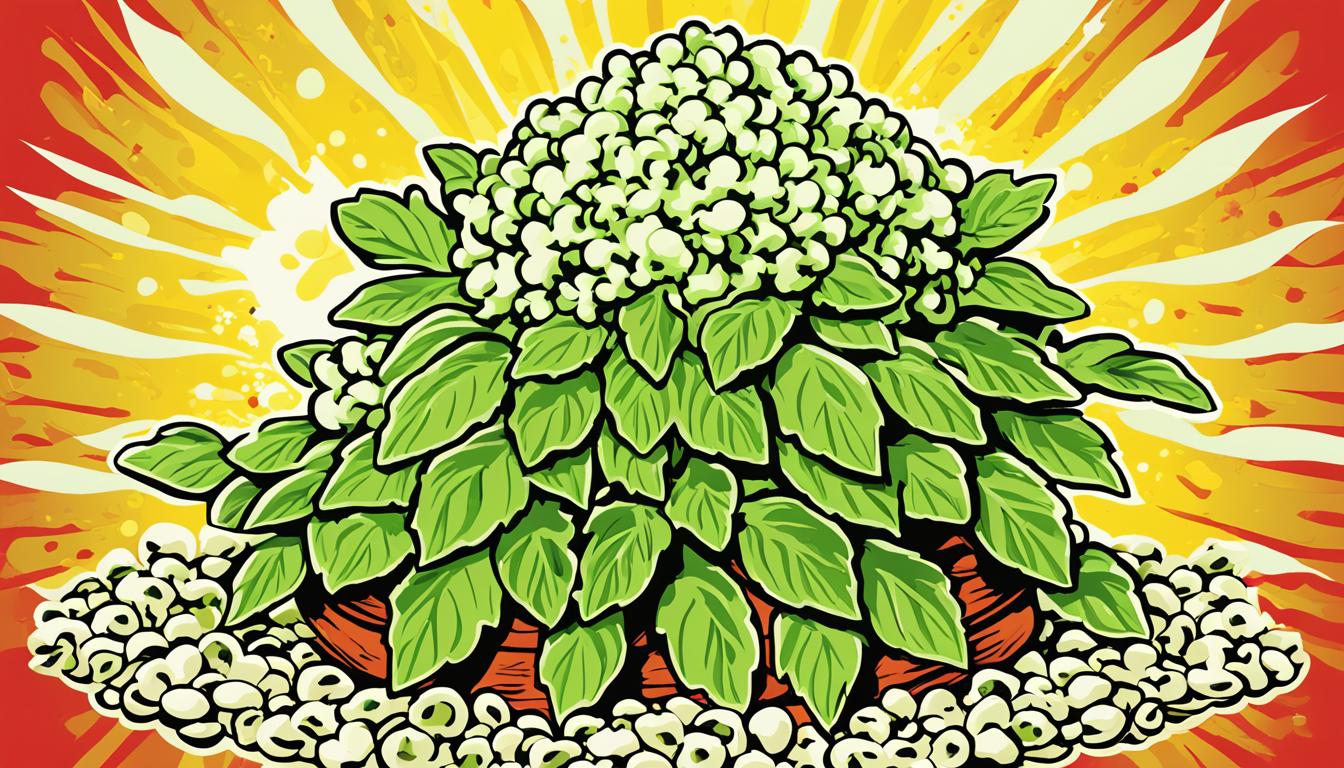Welcome to our article on the meaning of wasabi in Japanese! If you have ever enjoyed sushi or explored Japanese cuisine, you have likely encountered this unique and flavorful condiment. In this article, we will delve into the meaning and grammar of wasabi, explore how to pronounce it, and discuss its contextual and cultural usage in Japan.
The Origins of Wasabi
Wasabi, a popular condiment in Japanese cuisine, has its origins in Japan and has been consumed as a food for centuries. The plant grows naturally in the mountain river valleys of Japan, specifically along stream beds. First described by Miquel in 1866, wasabi has since become an essential part of Japanese culinary tradition.
Wasabi cultivation, however, is not an easy task. It requires specific environmental conditions, including partial submersion of the stems in clear running water. As a result, real wasabi is rare and expensive, making it difficult to find outside of Japan.
This image showcases the vibrant green color and distinct appearance of Japanese wasabi, highlighting its uniqueness and appeal. The cultivation process is labor-intensive and contributes to the high cost of real wasabi.
Real Wasabi vs. Fake Wasabi
In Japan, real wasabi, known as hon-wasabi, is highly valued. However, many “wasabi” products consumed outside of Japan are actually made from European horseradish. These imitation or fake wasabi products use a small percentage of real wasabi mixed with dyed European horseradish to create a cheaper alternative.
Real wasabi has a distinct flavor and zinginess that differs from the spiciness of fake wasabi. The use of real wasabi in other countries is limited due to its high price and limited availability.
To understand the difference between real and fake wasabi, let’s take a closer look at their characteristics:
Real Wasabi
Real wasabi is made from the rhizomes of the Wasabia japonica plant. It has a pale green color and a subtle, clean flavor with a zing that stimulates the senses. Real wasabi has a unique spiciness that is felt primarily in the nasal passage, providing a refreshing sensation.
Fake Wasabi
Fake wasabi, on the other hand, is often a blend of European horseradish, mustard powder, cornstarch, and green food coloring. It lacks the distinct flavor and zinginess of real wasabi, and the spiciness is more concentrated on the tongue rather than the nose.
When it comes to sushi or other Japanese dishes, opting for real wasabi can elevate the flavors and authenticity of the meal. However, if real wasabi is not available, imitation wasabi can still provide a similar spicy kick, albeit without the nuanced taste of the real thing.
In the next section, we will explore the spiciness of wasabi in more detail and discuss its sensory experience.
The Spiciness of Wasabi
When it comes to the spiciness of wasabi, a compound called allyl isothiocyanate is responsible for the unique sensation. This compound is also found in mustard and horseradish, giving them a similar level of spiciness. However, the spiciness of wasabi has its own distinct character and impact on the senses.
Unlike other spicy condiments, the spiciness of wasabi hits the nose more than the tongue. When you consume real wasabi, you will experience a clean and subtly spicy flavor that quickly fades. On the other hand, fake wasabi can also be zingy but lacks the same clean taste. The true flavor of wasabi is a crucial element that sets it apart from imitation products.
The sensation of spiciness in wasabi is primarily felt in the nasal passage, making it an intense yet short-lived experience. This unique spiciness is what makes wasabi a sought-after condiment in Japanese cuisine.
| Real Wasabi | Fake Wasabi | |
|---|---|---|
| Flavor | Clean and subtly spicy | Zingy but lacks clean taste |
| Spiciness | Hits the nose more than the tongue | Similar spiciness but lacks the same character |
| Sensation | Intense but short-lived | Can be intense but may linger |
Health Benefits of Wasabi
Real wasabi, derived from the Japanese horseradish plant, offers numerous health benefits. This flavorful condiment is packed with isothiocyanates, compounds known for their antibacterial and anti-inflammatory properties. Incorporating real wasabi into your diet can provide various advantages for your overall well-being.
Boosts the immune system: Isothiocyanates found in real wasabi have immune-boosting properties, helping to defend the body against infections and diseases.
Improves gut health: The antibacterial properties of wasabi can promote a healthy balance of gut bacteria, supporting digestive health.
Reduces inflammation: Real wasabi possesses anti-inflammatory properties that can help alleviate joint and muscle inflammation, providing relief for conditions like arthritis.
Protects against cancer and heart disease: The isothiocyanates in real wasabi have been linked to a reduced risk of cancer and heart disease, making it a valuable addition to a healthy diet.
Alleviates seasonal allergies: Wasabi’s antibacterial properties may help mitigate the negative effects of seasonal allergies, providing relief from common symptoms.
It’s important to note that these health benefits are specific to real wasabi and may not apply to fake imitation products. So, opt for authentic sources of wasabi to fully enjoy its nutritional value and experience its positive effects on your health.
| Nutrient | Amount per serving (1 tablespoon) |
|---|---|
| Calories | 43 |
| Carbohydrates | 9 grams |
| Fat | 0 grams |
| Protein | 1 gram |
| Fiber | 1 gram |
| Vitamin C | 11% of the Daily Value (DV) |
| Potassium | 4% of the DV |
| Calcium | 1% of the DV |
Cultivation of Wasabi
Wasabi cultivation is an intricate process that requires specific conditions and expertise. The ideal growing environment for wasabi includes mountain river valleys with running stream beds and a temperature range between 8 and 20°C. These conditions provide the necessary moisture and coolness for the plant to thrive.
While various regions in Japan cultivate wasabi, some areas stand out for their local production. Nagano Prefecture, Iwate Prefecture, and Shimane Prefecture have been known for their contributions to wasabi cultivation. However, the Izu Peninsula region in Shizuoka Prefecture takes the lead by producing approximately 70% of Japan’s wasabi.
Despite its significance in Japanese cuisine, wasabi cultivation is challenging and demanding. It requires careful attention to the intricacies of the plant’s growing conditions. As a result, wasabi is considered one of the most expensive crops globally. In order to meet the demand, Japan also imports a substantial amount of wasabi from other countries.
Wabi-Sabi and Japanese Aesthetics

Wabi-sabi is a profound Japanese aesthetic philosophy that celebrates the beauty of imperfection, transience, and simplicity. It encapsulates the essence of Japanese art and design, permeating various artistic forms with its unique charm. Wabi-sabi embraces asymmetry, roughness, and an appreciation for natural objects and the forces of nature.
In Japanese culture, wabi-sabi can be found in diverse artistic expressions, including garden design, tea ceremonies, poetry, ceramics, and flower arrangement. It is an integral part of traditional Japanese beauty, reflecting Buddhist teachings on impermanence, suffering, and emptiness.
Japanese gardens, with their minimalist and organic layouts, beautifully embody wabi-sabi principles. They blend natural elements, such as rocks, water, and plants, creating serene and harmonious landscapes. Tea ceremonies, rooted in Zen Buddhism, also embrace wabi-sabi aesthetics, emphasizing simplicity, understatement, and tranquility.
Wabi-sabi is intricately woven into Japanese poetry, known as haiku. These concise and evocative verses capture fleeting moments of beauty and reflect the impermanent nature of existence. Similarly, ceramics and pottery embrace wabi-sabi through their earthy textures, irregular shapes, and unglazed finishes, celebrating the uniqueness of each piece.
Another artistic form where wabi-sabi shines is Ikebana, the Japanese art of flower arrangement. Ikebana emphasizes simplicity, creating elegant compositions with minimalistic floral elements, branches, and leaves.
Wabi-sabi invites us to appreciate the beauty in imperfection, to embrace the transient nature of life, and to find contentment in simplicity. It is a profound artistic philosophy that has profoundly influenced Japanese culture and aesthetics, captivating hearts around the world.
| Characteristics of Wabi-Sabi | Examples in Japanese Art |
|---|---|
| Imperfection | Ceramics with irregular shapes and natural glazes |
| Transience | Haiku poetry capturing ephemeral moments |
| Asymmetry | Ikebana arrangements with unbalanced compositions |
| Simplicity | Japanese gardens with minimalistic designs |
| Natural Objects | Artwork incorporating elements from nature |
The Influence of Wabi-Sabi on Japanese Arts
Wabi-sabi, an essential element of Japanese aesthetics, has profoundly influenced various forms of Japanese art. One prominent example is found in Zen gardens, which epitomize the principles of wabi-sabi through their simplicity and appreciation of imperfection. These gardens, often featuring carefully arranged rocks and raked gravel, create a serene environment that encourages contemplation and mindfulness.
In addition to Zen gardens, wabi-sabi design elements can be observed in tea gardens and tea ceremonies. Emphasizing simplicity and the use of natural materials, these spaces evoke a sense of tranquility and harmony. The use of rough-hewn tea bowls, imperfectly shaped ceramics, and humble teaware exemplify the wabi-sabi aesthetic, creating an atmosphere of quiet elegance.
Wabi-sabi also finds expression in Japanese poetry, specifically haiku. In only a few words, haiku captures the essence of a scene, often depicting the beauty of nature in a fleeting moment. The concise and evocative language used in haiku reflects the wabi-sabi appreciation of transience and imperfection, allowing the reader to connect with the profound simplicity of life.
Ceramics and flower arrangement are other artistic mediums through which wabi-sabi aesthetics are embodied. Ceramics, particularly those made with organic ash glazes, showcase the beauty in irregularities and the natural effects of firing. Flower arrangement, known as ikebana, prioritizes asymmetry and a minimalistic approach, highlighting the inherent beauty of both flowers and empty space. This deliberate balance between simplicity and imperfection reflects the wabi-sabi philosophy.
Overall, wabi-sabi has become a central aspect of Japanese artistic and cultural expression. Its influence can be seen in various art forms, where simplicity, appreciation of imperfection, and a connection to nature are celebrated. Wabi-sabi invites us to embrace the beauty in the imperfect, find contentment in simplicity, and cultivate an understanding of the transience of all things.

